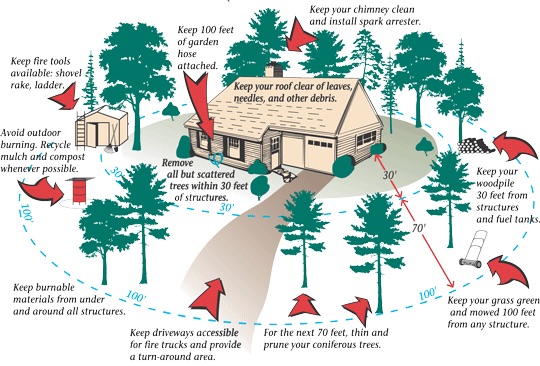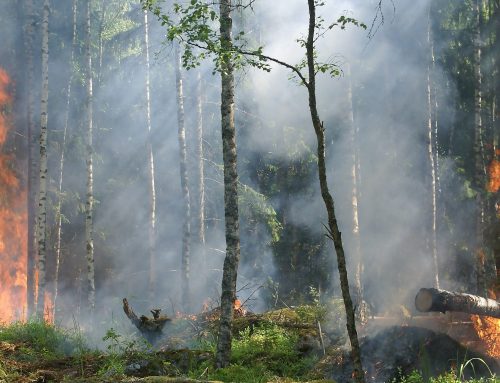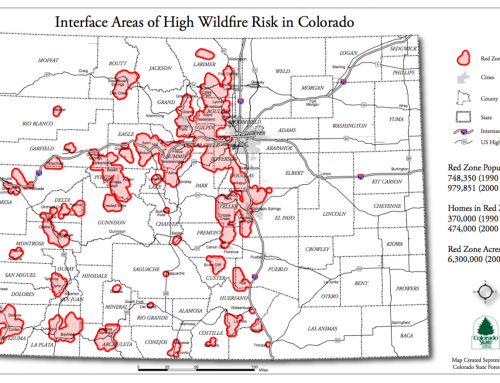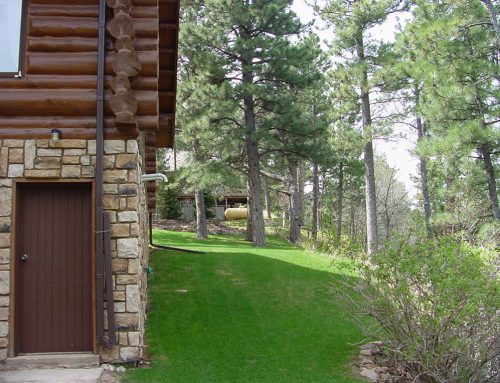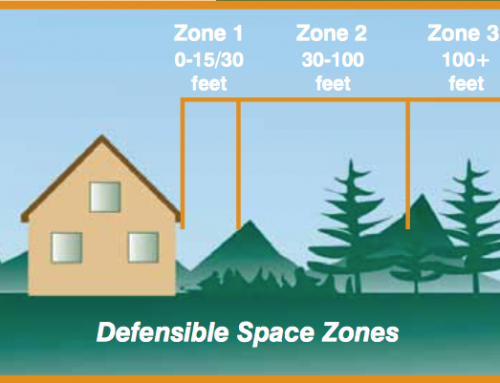In our second blog, we talked about how to create a defensible space for your home. Now, we are going to step back and take a look at what fire mitigation looks like from a yearly perspective, since it is not enough to simply do a one-time cleanup. We will determine what initial projects need to be taken care of, yearly tasks, and general preparedness. The following checklist is taken from the Colorado State Forest Service:
The projects below are a good start to fire mitigation, but see this blog for more a more in-depth assessment:
Initial Projects:
- Properly thin and prune trees and shrubs within the defensible space
- Dispose of slash from tree/shrub thinning.
- Stack firewood uphill from or on the same elevation as any structures, or at least 30 feet away from structures.
- Screen or wall-in stilt foundations and decks; screens should be 1/8-inch or smaller metal mesh (1/16-inch mesh is best).
- Screen attic, roof, eaves and foundation vents, and periodically check them to ensure that they are in good condition.
- Post signs at the end of the driveway with your last name and house number that are noncombustible, reflective and easily visible to emergency responders.
- Make sure that the driveway is wide enough for fire trucks to enter and exit, and that trees and branches are adequately cleared for access by fire and emergency equipment. Contact your local fire department or check the CSFS website for information specific to access.
The following annual tasks are also included in creating a defensible space, but only require a once yearly cleanup:
Annual Tasks:
- Clear roof, deck and gutters of pine needles and other debris.
- Mow grass and weeds to a height of 6 inches or less.
- Rake all pine needles and other flammable debris away from the foundation of your home and deck.
- Remove trash and debris accumulations from the defensible space.
- Check fire extinguishers to ensure that they are not expired and are in good working condition.
- Check chimney screens to make sure they are in place and in good condition.
- Remove branches that overhang the roof and chimney.
- Dispose of slash from tree/shrub thinning.
While our blogs and assessments have focused mostly on the exterior defense of your home, there are ways that you can prepare your family and the interior of your house in the event of a fire:
Stay Prepared:
- Complete a checklist of fire safety needs inside your home (these should be available at your local fire department). Examples include having an evacuation plan and maintaining smoke detectors and fire extinguishers.
- Develop your fire evacuation plan and practice family fire drills. Ensure that all family members are aware of and understand escape routes, meeting points and other emergency details.
- Contact your county sheriff’s office and ensure that your home telephone number and other important phone numbers appear in the county’s Reverse 911 or other emergency notification database.
- Prepare a “grab and go” disaster supply kit that will last at least three days, containing your family’s and pets’ necessary items, such as cash, water, clothing, food, first aid and prescription medicines.
- Ensure that an outdoor water supply is available. If it is safe to do so, make a hose and nozzle available for responding firefighters. The hose should be long enough to reach all parts of the house.

